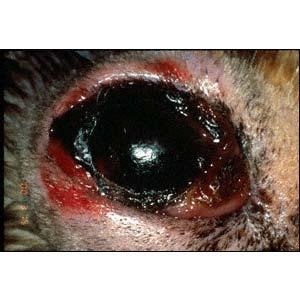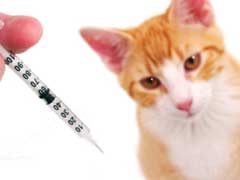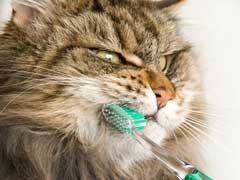
Cats
Hemoperitoneum (also commonly called hemoabdomen) is defined as blood within the cat's peritoneal (abdominal) cavity. It occurs following intra-abdominal hemorrhage as blood accumulates in the space between the abdominal wall and the abdominal organs.
Some causes of hemoperitoneum in cats include:
A thorough history and physical exam is critical for prompt and accurate diagnosis. Your veterinarian may also recommend:
The general approach to treatment varies on the clinical condition of the patient and the cause of the hemoperitoneum. Therapy may include:
Hemoperitoneum may be an emergency situation. Veterinary care should be sought as soon as possible. Keep your pet calm, comfortable and warm. Minimize stress until you can get to a veterinary hospital. If a traumatic injury is suspected, be careful moving your pet as spinal injury or fractures may be present.
 Ocular (Eye) Pain and Squinting in Cats
Ocular (Eye) Pain and Squinting in Cats
Ocular (Eye) Pain and Squinting in Cats
Ocular (Eye) Pain and Squinting in Cats
 Top 10 Things to Know About Cat Vaccinations
Cat va
Top 10 Things to Know About Cat Vaccinations
Cat va
 Cat Ear Mites – How To Get Rid of Them?
What i
Cat Ear Mites – How To Get Rid of Them?
What i
 Benadryl For Cats
Benadryl For Cats Benadryl (active ingredient diphenhydramin
Benadryl For Cats
Benadryl For Cats Benadryl (active ingredient diphenhydramin
 Top 10 Important Facts About Cat Dental Health
Becaus
Top 10 Important Facts About Cat Dental Health
Becaus
Copyright © 2005-2016 Pet Information All Rights Reserved
Contact us: www162date@outlook.com